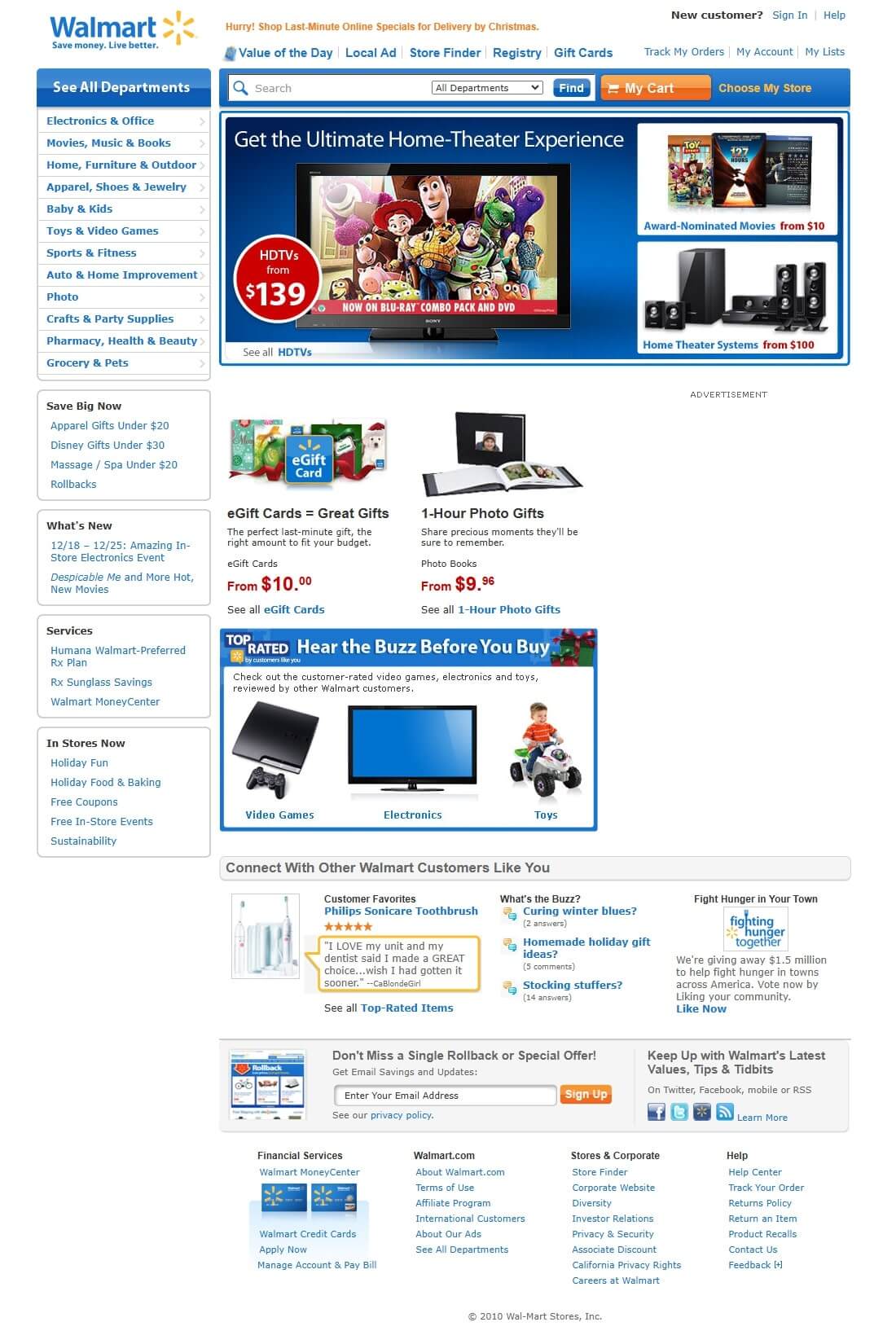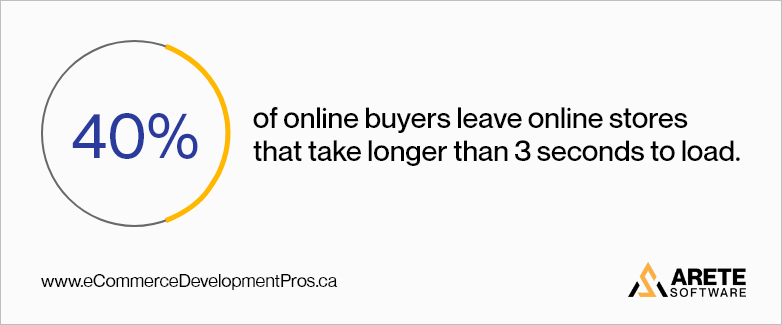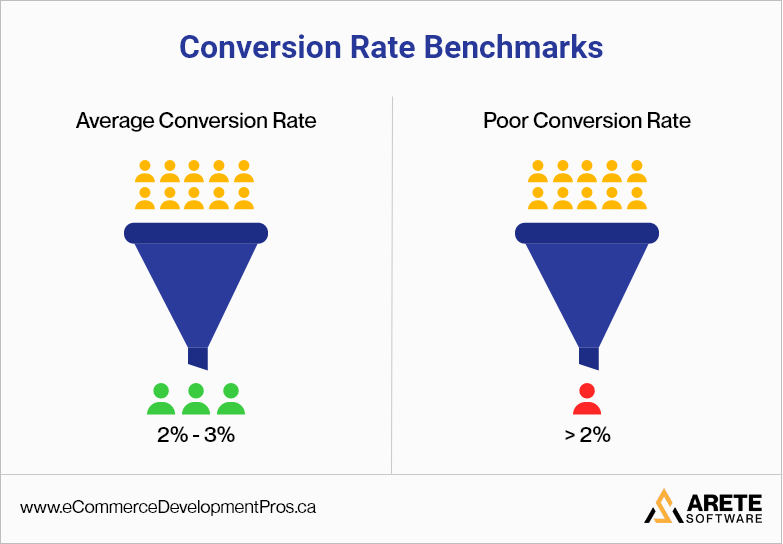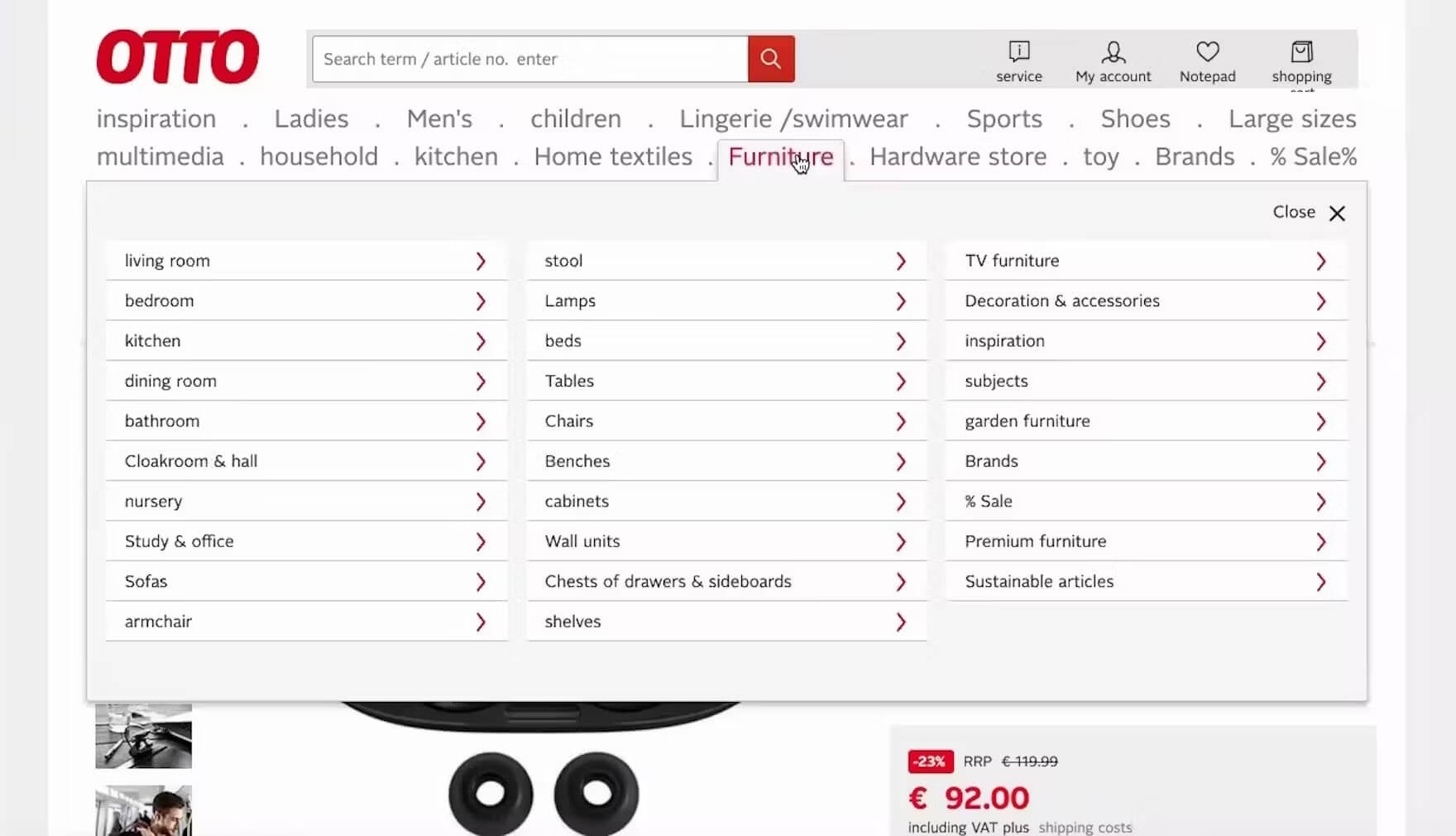- 1. Your Store Looks Dated
- 2. Poor Mobile Experience
- 3. Slow Page Load Speeds
- 4. Low Conversion Rates
- 5. Poor Website Navigation
- 6. Low or Declining SEO Rankings
- 7. Using a Free Theme with Limited Features
- 8. Your Online Store is Still Using Shopify 1.0 Theme
- 9. Your Brand Has Evolved
- 10. Inconsistent or Outdated Content
- 11. High Bounce Rate or Poor Engagement Rate
- 12. Frequent Customer Complaints
- 13. You’re Expanding to International Markets

Is your Shopify store costing you sales?
A site that felt modern when you launched can quickly fall behind and can result in slower load times, an outdated design, and clunky navigation.
Customers notice this, and so does Google.
And in ecommerce, that means lost conversions and weaker search rankings.
After 17+ years working with Shopify stores, one thing’s clear:
An outdated design always costs more in lost sales than a redesign does.
In this guide, we’ll walk through 13 signs it’s time to redesign your Shopify website—from poor mobile performance to declining SEO. By the end, you’ll know if your store needs a refresh to win more traffic, trust, and sales.
1. Your Store Looks Dated
The user’s first impression is what matters!

Signs Your Design is Outdated:
- Heavy gradients, large fonts, or old-fashioned colour schemes.
- Too little use of whitespace, making the page feel busy.
- Excessive use of flashy animations or banners distracts the user instead of engaging them.
- Design elements that are off-brand or misaligned with audience preferences.
- The website doesn’t look great or function smoothly on mobile devices.
2. Poor Mobile Experience
Take a second and pull up your store on your phone.
Can you navigate it easily without pinching, zooming, or guessing where to tap?
If the answer’s no—or even maybe—there’s a good chance you’re losing customers.
More than 70% of online shopping happens on mobile now. That stat alone is enough to make any Shopify store owner stop and pay attention. And it’s not just about convenience. Google uses your mobile experience to decide how high (or low) you should rank in search results.


Here are some signs your mobile setup needs help:
- Pages take longer than 3 seconds to load on mobile—people bounce.
- Menus and buttons are too small or crammed too close together.
- Font sizes don’t adjust across devices, so people squint or scroll awkwardly.
- Product images or text get cut off or misaligned.
- The checkout flow is too clunky—or doesn’t support mobile payment options.
We’ve seen stores with strong desktop designs lose thousands in revenue simply because their mobile version was an afterthought. Don’t let yours be one of them.
3. Slow Page Load Speeds
In eCommerce, speed isn’t a luxury—it’s survival.
If your Shopify store drags, even for a few seconds, shoppers won’t wait around. Especially on mobile. They’ll bounce, they’ll abandon their cart, and in many cases, they won’t come back.
Studies show that nearly 4 in 10 shoppers leave a site that takes longer than 3 seconds to load. That’s not a delay—it’s a dealbreaker.
And it hits in all the wrong places: lost revenue, lower search rankings, and a dip in customer trust.
Result?
Lost sales. Fewer return visits. Lower visibility in search.

To keep users engaged—and to stay on Google’s good side—your store needs to load fast. Not just homepage fast, but product-page fast, checkout fast, and mobile fast.
Signs Your Page Load Speeds are Too Slow:
- Bounce rates are climbing. People are landing on your site and leaving almost immediately.
- Conversions are dipping. Slow pages lead to abandoned carts and unfinished checkouts.
- Images take forever to load. Especially product photos—big files, no compression.
- Your performance score is in the red. Tools like Google PageSpeed Insights or GTMetrix flag it—and so does Google.
A one-second delay might not sound like much. But over time, it can quietly cost you thousands in lost orders.
4. Low Conversion Rates
Is your Shopify website getting a good amount of traffic but experiencing poor sales? If so, now is the time to look at your online store’s design and functionality. The average conversion rate for eCommerce stores is 2%-3%.

If you’re consistently below that 2-3% range, it’s a red flag. People are interested enough to click through—but something is stopping them from completing the purchase.
That “something” could be:
- A layout that’s hard to follow
- Pages that feel cluttered or outdated
- A checkout process that takes too long—or asks for too much
Signs of Low Conversion Rates:
- Abandoned carts are piling up. Customers are adding items, but not checking out.
- Sessions are short. People land on your site, look around briefly, then leave.
- Low engagement. Few visitors click on product tabs, reviews, or CTAs.
- Funnel drop-off. Shoppers don’t make it past shipping or payment pages.
Here’s the truth: if people are visiting your store but leaving empty-handed, it’s not just a design issue—it’s a revenue leak.
A redesign isn’t always about making things prettier. It’s about removing friction, building trust, and making the path to purchase feel easy.
5. Poor Website Navigation
However, a user-friendly navigation system helps customers find the products quickly, thus enhancing the user experience.

Example of an eCommerce website with poor navigation
Signs of Poor Navigation:
- Too Many Choices: If your website menu is overcrowded (similar to the example above) or complicated, it may confuse your customers even before they begin to browse.
- No smart search functionality: This is 2025, and people are accustomed to the advanced search options available, like predictive search, showing matching options or products while the user starts typing. No smart search will make the process of finding what they are looking for rather difficult and can cost a potential loss of customers.
- No Voice Search Capability: We live in the world of Siri, Alexa, and Google Assistant. With more than 60% of e-commerce transactions happening on mobile devices, without a voice search option, you might be missing opportunities to serve tech-savvy shoppers.
- Hidden or Hard-to-Find Pages: Your website’s key pages, such as product categories, FAQs, policy pages, and contact forms, should never be more than a click away.
- Broken Links or Dead Ends: Clicking a link leads to an error page, which hurts the user experience.
- Confusing Layouts: Are your categories and subcategories aligned with how customers shop? If not, they may abandon their buying journey on your store entirely.
6. Low or Declining SEO Rankings
Approximately 26.1% of e-commerce orders are directly linked to organic traffic. If you recently noticed that your Shopify store’s SEO rankings are declining, it’s a clear sign that your website needs your attention and perhaps a redesign.

Signs of Low or Declining SEO Rankings:
- A drop in the number of search engine visitors
- Using vendor-supplied product data, which is also used by hundreds of other websites (duplicate content)
- Missing or outdated metadata
- Slow website speed
- Non-responsive design or not fully optimized for mobile and tablet devices
- Broken links or errors such as 404 pages, duplicate content, or missing alt text for images.
- Your store’s SEO rankings are stagnant or declining.
While improving your SEO rankings brings more visitors to your Shopify store, the real challenge is keeping them engaged once they are on your store. This brings us to our next critical sign: a high bounce rate or poor engagement rate.
7. Using a Free Theme with Limited Features
Free Shopify themes are an excellent place to launch for any startup or small business.
However, as business grows, most online store owners find that they don’t have the advanced features or flexibility that become a roadblock.
The limited design options, performance optimization, and lack of integration options hold back your store’s growth.
Signs Your Free Theme is Holding You Back:
- You’re stuck with rigid layouts. Want a custom home, collection, or product page for a growing catalogue? Not happening without workarounds—or code.
- It’s missing the tools you actually need. Things like mega menus, smart product filters, or upsell sections usually aren’t baked in.
- The design feels behind the times. Many free themes don’t follow modern UX trends or mobile best practices, which can hurt first impressions.
- Pages are sluggish. Some free themes are bloated or just not well-optimized, which can slow down your site and impact SEO.
- You’re adding app after app just to keep up. What started as “free” quickly becomes expensive when you’re stacking apps to get basic features.
If you’re constantly hitting roadblocks or spending more time patching things than growing your store, your theme may be part of the problem.
8. Your Online Store is Still Using Shopify 1.0 Theme
Shopify released its new theme framework—Online Store 2.0—back in 2021. It came with faster load times, better layout control, easier content editing, and overall more flexibility for merchants.
But here’s what most people don’t realize: if your store was built before that, you’re probably still on the old 1.0 theme—and there’s no automatic upgrade button. Moving to 2.0 means a rebuild.
That might sound like a hassle, but sticking with 1.0 long-term can slow you down more than you think.

Signs You’re Still Using Shopify 1.0:
- Your store was built before mid-2021 and hasn’t had a major redesign.
- You can only edit sections on your homepage—not on product or collection pages.
- The site feels slower than your competitors’, especially on mobile.
- Some apps don’t install properly or don’t show all their features.
- You don’t have access to metafields, so adding custom info to product pages is tricky.
- You always need a developer, even for simple layout changes.
Using Shopify 1.0 in 2025 is kind of like running an old version of your phone’s software. It works—but you’re missing all the tools and shortcuts that make life easier.
If your store has been standing still for a few years, this might be the upgrade that unlocks the next phase of your growth.
9. Your Brand Has Evolved
Brands change. That’s normal.
You might’ve started small, with just a handful of products and a clear idea of who your customers were. But over time, things shift. You expand the product line. Your audience matures. Your tone of voice gets sharper. Maybe you even go through a full rebrand.
The question is—has your Shopify store kept up?
If not, your website might be sending mixed messages. And in ecommerce, confusion kills conversions.


Signs Your Branding Has Outgrown Your Website:
- Mismatch Between Design and Products: Selling luxury items in a store with a budget, casual aesthetic.
- Your logo, colours, or fonts feel outdated—or worse, inconsistent across pages.
- You’re speaking to a new audience, but your visuals still reflect your old one.
- Your product line has grown, but your layout wasn’t built to handle it.
- A disconnect between your brand and your site doesn’t just look off—it can lead to trust issues, hesitation, and drop-offs at checkout.
10. Inconsistent or Outdated Content
When’s the last time you actually read through your own site?
You’d be surprised how often we see things left behind:
- A Black Friday promo still running in March.
- Size charts that don’t match the products.
- Blogs that stopped in 2021 and never picked up again.
Your website is your voice. If the content is outdated, inconsistent, or flat-out wrong, it sends the wrong message. And in ecommerce, that doesn’t just look sloppy—it erodes trust and costs sales.

Signs of Inconsistent or Outdated Content:
- Outdated or incorrect product details. Copy straight from suppliers often skips the info your customers actually need.
- Different “voices” across pages. Some descriptions sound formal, others casual—like they came from two different businesses. That lack of consistency weakens your brand.
- Expired promotions still live. Like leaving Christmas decorations up in February—it makes shoppers wonder if anyone’s minding the store.
- Poor-quality or mismatched images. Blurry photos or inconsistent backgrounds kill trust instantly.
- A blog that’s gone stale. If your last post is years old, it makes your whole site feel neglected.
- Policy pages that confuse shoppers. Missing, outdated, or unclear info about shipping or returns raises red flags and can stop a sale cold.
11. High Bounce Rate or Poor Engagement Rate
Benchmarks for E-commerce Stores
Bounce Rate
Good Bounce Rate:
- 20% to 45% is generally considered excellent for e-commerce websites.
Average Bounce Rate:
- 45% to 55% indicates an acceptable, though improvable, engagement level.
Bad Bounce Rate:
- Above 55% is concerning and may signal issues with user experience, page load speed, or irrelevant content.
Critical Bounce Rate:
- Above 70% is often alarming for e-commerce stores and indicates a need for immediate fixes.
Engagement Rate
Good Engagement Rate:
- 20% to 30% is generally considered excellent for e-commerce, indicating strong user interaction.
Average Engagement Rate:
- 10% to 20% suggests moderate engagement but room for improvement.
Poor Engagement Rate:
- Below 10% signals weak engagement and potential user experience issues.
Signs of High Bounce Rate or Low Engagement:
- Your website visitors spend only a few seconds on your site and then leave. In other words, the bounce rate is high.
- Low Click-Through Rates (CTR)
- Users only view the home page and leave without exploring the other pages.
- Website visitors browse your products, but they don’t add anything to their cart.
These signs indicate that your website has design flaws, poor user experience, irrelevant content, or slow load times. Whatever the cause, these indicate missed opportunities to convert visitors into customers.
12. Frequent Customer Complaints
If your customers are telling you something’s off with your site, it’s time to listen.
When complaints become a pattern, your store’s design, structure, or performance is likely the root cause. And if it’s turning off the people who want to buy from you, imagine what it’s doing to those who don’t even know you yet.


Signs Frequent Complaints Are a Problem:
- Complaints about difficult navigation, broken links, 404 errors, or complicated features to use.
- Your website is slow or has unresponsive elements.
- Complicated or multi-step checkout with no guest checkout option.
- The website doesn’t work very well on mobile devices.
- High cart abandonment rate
- The website looks outdated. It doesn’t instill confidence to shop.
- Incomplete, confusing, or outdated product information that confuses customers.
- Can’t pay with the regional popular payment gateway.
13. You’re Expanding to International Markets
Planning to sell outside of Canada or the U.S.? That’s a huge step forward—but if your Shopify store isn’t set up for it, you might run into trouble.
So, before you launch overseas, ask: Is your store truly built for a global audience?


Signs Your Store Isn’t Ready for International Markets:
- Your site’s only in English. No translation options, even for your best-selling pages.
- Prices show in just one currency. If someone’s buying from Germany or Singapore, they want to see their own currency—not guess with a calculator.
- Shipping info is unclear or overly generic. No regional delivery times, no country-specific rates.
- Missing local payment methods. Customers in Europe might expect Klarna. In Asia, maybe Alipay or GrabPay.
- Taxes and duties aren’t shown clearly. If people don’t know what they’ll owe when the package arrives, they’ll likely back out.
Selling internationally is exciting—but it has to feel smooth for your customer. If it doesn’t, they’ll shop somewhere else.
So—Is It Time for a Shopify Store Redesign?
This isn’t about chasing trends. It’s about making sure your store still works for your brand, your customers, and your goals.
If your site feels slow, outdated, hard to update, or no longer reflects who you are as a business, it’s probably time.
Redesigning doesn’t have to mean starting over. But it does mean raising the bar on what your online experience should feel like—for your team and your customers.
Take a minute. Go back through the 13 signs.
If more than a few feel familiar, your next move is probably clear.
Before You Redesign Your Shopify Store: FAQs That Matter
1. How do I know if my Shopify store needs a redesign?
You’ll usually feel it before you fully realize it. Maybe sales have dipped even though traffic is steady. Or customers are asking the same questions over and over. If your site looks dated, loads slowly, or just doesn’t feel like “you” anymore—it’s probably time to take a closer look.
2. Why do other store owners bother with redesigns?
Because small fixes only go so far. Some folks want a cleaner look. Others are fed up with a clunky backend or an old theme that can’t keep up. A lot of store owners just hit that point where the site doesn’t match where their brand is headed.
3. Should I make changes to my existing Shopify website instead of a complete redesign?
Sure—if it’s small stuff. Maybe your images need updating, or your homepage could use a little rework. But if the structure is wrong or your theme is outdated, patching won’t solve the deeper problems. Sometimes it’s better to start fresh. It saves more time and effort in the long run.
4. What are the benefits of a full redesign?
You make the shopping experience easier. Faster pages. Simpler navigation. Less confusion. Plus, your brand comes across the way you want it to. And behind the scenes? Easier to update, fewer workarounds, more flexibility to grow.
5. How often should I update my store design?
There’s no fixed rule. But if it’s been a few years—or if your store looks and feels like it’s stuck in the past—it’s worth reviewing. Even small updates once a year can go a long way. A full refresh every 2–3 years keeps things current.

Wondering Where to Begin?
We’ve been in your shoes—or worked with enough store owners who have.
If some of these signs hit a little too close to home, and you’re not sure what needs fixing (or how big the fix needs to be), we can help.
We offer a quick, no-pressure audit of your Shopify store.
Want us to take a look?



